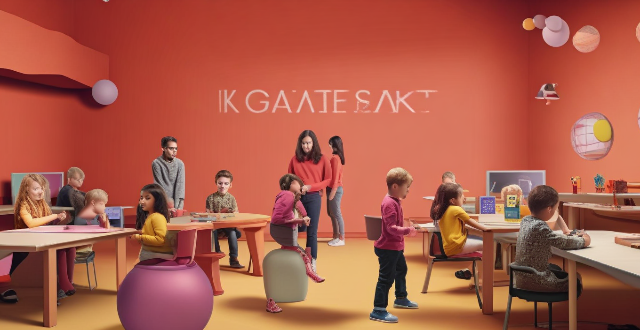Gamification and game-based learning foster innovative teaching environments by engaging students with challenges and rewards, promoting collaboration and competition, providing immediate feedback and personalization, and enhancing student motivation and engagement. These methods use elements of games to motivate students and enhance their learning experience, making learning more fun, interactive, and enjoyable. By incorporating these approaches, educators can transform traditional classrooms into dynamic spaces where students actively participate in their own learning journey.

In what ways do gamification and game-based learning foster innovative teaching environments?
Gamification and game-based learning are two approaches that have been gaining popularity in education due to their ability to create engaging and innovative teaching environments. These methods use elements of games, such as challenges, rewards, and competition, to motivate students and enhance their learning experience. Here are some ways in which gamification and game-based learning can foster innovative teaching environments:
1. Engaging Students with Challenges and Rewards
One of the key aspects of gamification is the use of challenges and rewards to motivate students. By presenting learning material as a series of challenges or quests, teachers can encourage students to actively participate in the learning process. For example, a teacher might create a scavenger hunt where students must find information related to a particular topic. As they complete each challenge, they earn points or badges that can be used to unlock additional content or rewards.
This approach not only makes learning more fun but also helps students develop problem-solving skills and critical thinking abilities. Additionally, it allows teachers to track student progress and provide feedback in real-time, enabling them to adjust their teaching strategies accordingly.
2. Promoting Collaboration and Competition
Game-based learning often involves collaborative activities where students work together to achieve a common goal. This promotes teamwork, communication, and social skills, all of which are essential for success in today's workplace. Moreover, by introducing elements of competition into the learning process, teachers can further motivate students to perform better and push themselves beyond their limits.
For instance, a teacher might organize a friendly competition between groups of students working on a project. The winning group could receive extra credit or recognition, encouraging students to put forth their best effort while still maintaining a supportive environment.
3. Providing Immediate Feedback and Personalization
Both gamification and game-based learning allow for immediate feedback, which is crucial for effective learning. When students receive timely feedback on their performance, they can quickly identify areas where they need improvement and take corrective action. Furthermore, these approaches enable teachers to personalize the learning experience by adapting content based on individual student needs and preferences.
For example, if a student struggles with a particular concept, a teacher might offer additional resources or practice exercises tailored to that student's learning style. This not only helps the student overcome difficulties but also demonstrates that the teacher cares about their success.
4. Enhancing Student Motivation and Engagement
Finally, gamification and game-based learning can significantly enhance student motivation and engagement. By making learning more interactive and enjoyable, these methods help students stay focused and interested in the subject matter. This increased engagement leads to better retention of information and improved academic performance.
In conclusion, gamification and game-based learning offer numerous benefits for creating innovative teaching environments. By incorporating challenges, rewards, collaboration, competition, immediate feedback, personalization, and enhanced motivation, educators can transform traditional classrooms into dynamic spaces where students actively participate in their own learning journey.